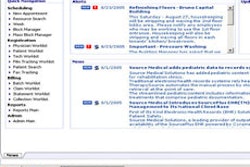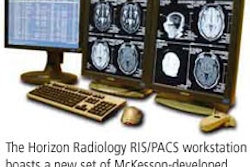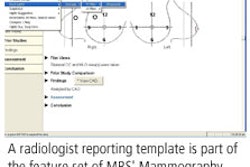Speech recognition cuts report turnaround time, resulting in better service to referring clinicians. However, implementing a speech recognition (SR) application is not a plug-and-play task. Radiologists have to train the system to recognize the nuances of their voice, and their reporting style may have to be adjusted to suit the vagaries of the SR application -- both of which take time.
During the rollout of an SR software package, one given is that exam volume does not decrease. Many SR adopters report high levels of frustration in trying to maintain productivity while wrestling with individualizing the technology to their needs during the early phases of its deployment.
"In some case, you force your radiologists to act as transcriptionists (during an SR deployment)," said Kenneth Crane. "This can decrease the efficiency of the radiologist."
Crane presented results from a study conducted at the department of radiology at the University of Pittsburgh Medical Center (UPMC) on SR technology deployment at the 2005 RSNA conference in Chicago.
"Furthermore, the training regimen that many SR systems demand is suboptimal and somewhat painful for the radiologist," he said. "This results in a poor initial user acceptance of the system."
According to Crane, there are two strategies for an SR implementation. The traditional change management strategy is to deliver the application to the desktop and inform the radiologists that they must use it. Crane called this the "cold turkey" deployment.
Crane's team at UPMC sought to determine whether a combination of manual transcription and SR could mitigate the transitional costs associated with its deployment and improve their radiologists' acceptance of new SR systems. They developed a change management strategy that utilized the existing medical transcriptionists to act as proofreaders for the initial SR reports.
"This helps take the SR burden off the radiologists and leverages the personnel that you already have," he said.
During the initial period of SR use, reports are first analyzed by the SR software, then sent to a manual transcriptionist who proofreads the report for accuracy, Crane said. This model, in which the transcriptionist is acting as a proxy for the radiologist in proofreading reports, allows radiologists to begin using the SR system without undergoing formal training sessions, according to Crane.
"The advantages of using the medical transcriptionists as proofreaders are clear," he said. "The medical transcriptionist takes the burden of the larger corrections away from the radiologists, which allows them to be effective in their workload."
UPMC introduced an integrated document authoring system, which commands and controls the entire document authoring process. The system allows the collection of radiology reports from the reading room as digital dictation and sends them to a server, which then transcribes them via a speech recognition application. The reports are sent to a medical transcriptionist who proofreads them and makes them available to the reporting radiologist to edit and sign. According to Crane, the UPMC team has also created tools for optimizing the editing process for both transcriptionist and radiologist.
"When the error rate of the SR system becomes acceptably low, the manual transcriptionist can be excluded from the system," Crane said.
The UPMC researchers measured the amount of time required for a transcriptionist to correct an SR report on a per-hour basis, and compared it to the time required to manually transcribe a report. The team assessed the acceptance of the new system with regard to radiologists and transcriptionists, and compared radiologist productivity (the number of cases and report turnaround time) before and after the introduction of SR.
"The average time for a radiologist to edit and sign a report, when they're looking at a result directly from the speech recognition engine is around 27 seconds," Crane said. "When the medical transcriptionist is included as a proxy and proofreader, the time required is 11 seconds."
Editing reports also enabled the transcriptionists to increase their productivity. On average, the transcriptionists were able to generate 10 reports per hour when manually transcribing. With the introduction of the document authoring system, they were able to produce an average of 18 reports per hour.
In addition, the combined system improved overall radiologist efficiency because the proofread reports had fewer recognition errors, Crane said. As expected for any SR system, the overall report turnaround time ratio improved by 0.62%, he said.
The advantage of the UPMC change management strategy was minimal impact on the radiologists' workflow and a greater acceptance of SR technology. In addition, they saw an increase in efficiency of the medical transcriptionists.
Although the UPMC strategy to ease its radiologists into SR through the use of correctionists has been successful, Crane noted that there are some drawbacks in comparison with the cold turkey model.
"The disadvantages of our strategy are that the turnaround time is temporarily greater than the scenario of going cold turkey with SR," he said. "Furthermore, the initial cost savings are less than pure SR because we continued to employ our medical transcriptionists."
By Jonathan S. Batchelor
AuntMinnie.com staff writer
January 27, 2006
Related Reading
Speech recognition improves service to clinicians, June 5, 2005
Speech recognition drives more concise reporting, June 4, 2005
Radiology reports prone to variability, June 3, 2005
Studies critique radiologists' reports in chest x-ray, knee MRI, April 19, 2005
European studies show SR has multilingual muscle, March 24, 2005
Copyright © 2006 AuntMinnie.com



















